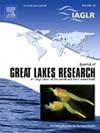Spatial comparison of two lake whitefish (Coregonus clupeaformis) spawning aggregations from the Bay of Quinte and eastern Lake Ontario
IF 2.4
3区 环境科学与生态学
Q3 ENVIRONMENTAL SCIENCES
引用次数: 0
Abstract
Lake whitefish (Coregonus clupeaformis) in the Laurentian Great Lakes have experienced major ecological changes and overexploitation throughout the past century. In Lake Ontario, the lake whitefish population was severely reduced and has shown minimal reproductive success since the 1990s. Two spawning aggregations have persisted within the Canadian side of the eastern basin, both of which continue to be targeted by commercial fisheries. The first group utilizes spawning habitat within the Bay of Quinte, while the other uses sections of shoreline on the south side of Prince Edward County in Lake Ontario. There is currently very little known regarding the seasonal distribution of these spawning aggregations, and whether or not they can be considered as isolated groups. Using acoustic telemetry, this study analyzed the spatial distribution and movement patterns of 23 lake whitefish in eastern Lake Ontario to determine whether the two spawning groups were spatially discrete. Spatial analysis revealed clear differences in space use between the spawning aggregations. Mixing of the spawning groups did not occur during the spawning season. Mixing was minimal at other times of the year and primarily occurred in the northwestern area of the eastern basin during August and September. Future research is needed to investigate factors that drive these behavioural differences, and the consequences for stock viability.
求助全文
约1分钟内获得全文
求助全文
来源期刊

Journal of Great Lakes Research
生物-海洋与淡水生物学
CiteScore
5.10
自引率
13.60%
发文量
178
审稿时长
6 months
期刊介绍:
Published six times per year, the Journal of Great Lakes Research is multidisciplinary in its coverage, publishing manuscripts on a wide range of theoretical and applied topics in the natural science fields of biology, chemistry, physics, geology, as well as social sciences of the large lakes of the world and their watersheds. Large lakes generally are considered as those lakes which have a mean surface area of >500 km2 (see Herdendorf, C.E. 1982. Large lakes of the world. J. Great Lakes Res. 8:379-412, for examples), although smaller lakes may be considered, especially if they are very deep. We also welcome contributions on saline lakes and research on estuarine waters where the results have application to large lakes.
 求助内容:
求助内容: 应助结果提醒方式:
应助结果提醒方式:


